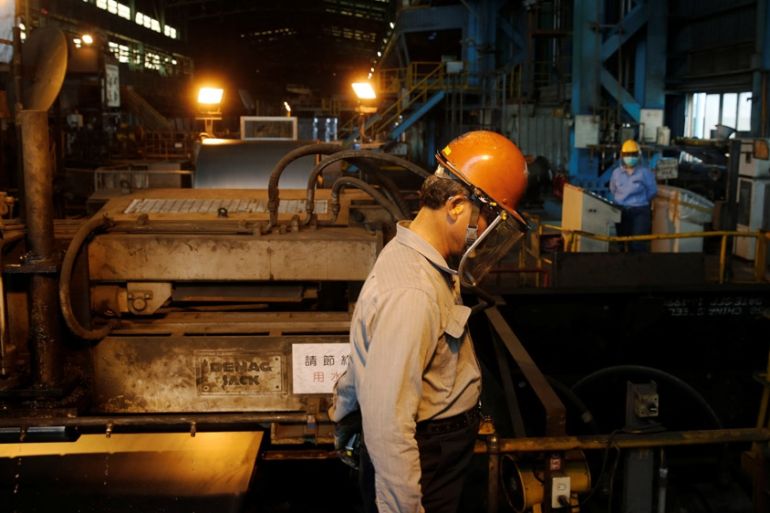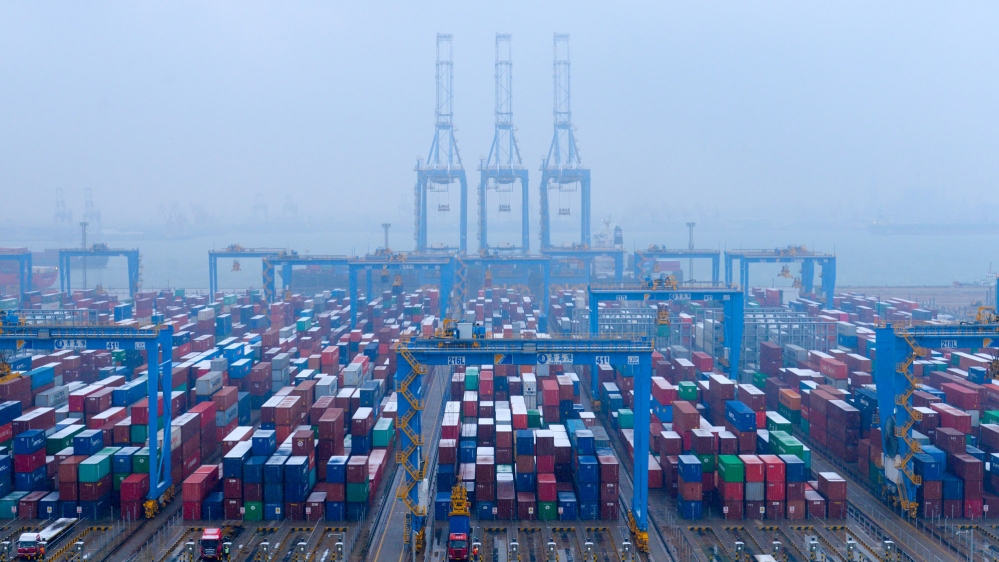China sneezes: Asian factories feel chill of US-China dispute
Latest surveys of factory owners in China and other Asian countries show activity slowing down.

Hong Kong – As Asia’s largest economy, China is a place where what happens these days is almost certain to be felt across the region. So it’s little surprise that new figures pointing to weakness in China’s factories are also being reflected elsewhere.
A keenly watched private gauge of Chinese manufacturing activity, the Purchasing Managers’ Index (PMI), released on Monday by market research firm Caixin/Markit, came in at 50.2 for May. A figure above 50 indicates activity is increasing, while anything below that suggests a contraction. It was unchanged from the previous month.
Keep reading
list of 4 itemsChina’s economy beats expectations, growing 5.3 percent in first quarter
Inside the pressures facing Quebec’s billion-dollar maple syrup industry
Manipur’s BJP CM inflamed conflict: Assam Rifles report on India violence
But an official survey carried out by the government and released on Friday suggests that factory activity is shrinking. China’s National Bureau of Statistics figure was 49.2.
Japan, South Korea, Malaysia and Taiwan also showed a slowdown in manufacturing. The figure for Vietnam indicated growth, though at a slower pace than in April. One bright spot in the region was the Philippines, where manufacturing growth expanded.
China sources components from around Asia, so any contraction in demand for Chinese goods gets passed along to companies that supply factories there.
Analysts say factory owners in China are becoming warier of the potential effects of the trade war with the United States on their businesses.
“The sharp downturn[s] in confidence in the external sector were the main drags on the headline PMI, with the new export and import orders sub-indices falling to 46.5 and 47.1 respectively, more than two percentage points from April,” Koh Hui Koon, an analyst from Fitch Group, told Al Jazeera.
Koh says the hardening rhetoric from both sides suggests trade tensions will remain elevated over the coming months, likely keeping PMI readings under pressure.
‘Front loading’
In the run-up to the latest round of tit-for-tat tariffs between the world’s two biggest economies, many importers in both China and the US were stockpiling goods to beat implementation deadlines, creating extra demand for manufacturers, so-called “front loading”.
“In the past, we might have seen front-loading effects lift the headline PMI, primarily through strengthening new export orders,” Nick Marro, an analyst at The Economist Intelligence Unit, told Al Jazeera.
But Marro says the latest round of tariffs likely kicked in too quickly for manufacturers to react.
China’s duties of up to 25 percent on $60bn worth of US goods came into effect on Saturday, in retaliation for Washington’s move to target $200bn of Chinese exports with punitive tariffs.

“The trade tensions between the US and China are having an impact on confidence and the best way to respond to this is to boost the confidence of enterprises, residents and capital markets [is] by carrying out favorable reforms and to undertake timely adjustments to regulations and controls,” said Zhengsheng Zhong, Director of Macroeconomic Analysis at CEBM Group, in a statement issued by IHS Markit with the Caixin results.
The trade war may have started as a dispute between governments, but it’s spilling over into tit-for-tat actions by private companies.
The Reuters news agency reported on Friday that embattled Chinese telecoms giant Huawei is said to be reviewing its relationship with US delivery service FedEx Corp after it diverted four of its packages. China also said over the weekend it’s ready to release a blacklist of US firms.
But analysts believe China will do whatever is necessary to prop up its economy.
“We believe Beijing will move to resolutely support the economy with more stimulus given the recent string of negative data readings, such as the 3.7 percent contraction of industrial profits in April, which will help to cushion the downturn,” said Koh.